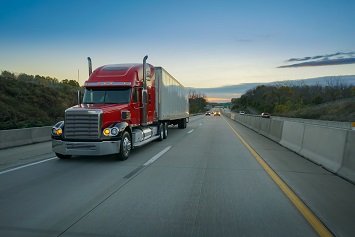The Federal Motor Carrier Safety Administration (FMCSA) reported 25,168 drug violations among commercial motor vehicle (CMV) drivers for 2020 as of June. On July 13, the FMCSA released a June monthly report for its Drug and Alcohol Clearinghouse.
The Clearinghouse began accepting registrations on October 1, 2019, and the FMCSA’s Commercial Driver’s License Drug and Alcohol Clearinghouse rule became effective on January 6. The central repository of records of CMV drivers’ drug and alcohol violations is intended to prevent drivers from concealing any drug or alcohol violations simply by moving to another job or another jurisdiction.
The Clearinghouse also reported 593 alcohol violations so far this year. Preemployment testing accounted for 13,413 drug violations, including 11,663 positive tests and 1,751 refusals. Preemployment alcohol testing produced 22 positive results, with 4 refusals, resulting in 26 violations.
Random drug testing led to 7,149 positive tests and 1,404 refusals for 8,553 total violations. Random alcohol testing saw 173 positive tests and 77 refusals for 250 total violations.
Postaccident drug testing led to 983 positive tests and 127 refusals for 1,110 total violations. Postaccident alcohol testing saw 30 positive tests and 25 refusals for 55 total violations.
There were 273 positive results in reasonable-suspicion drug testing and 170 refusals for 443 total violations. There were 125 positive results in reasonable-suspicion alcohol testing and 32 refusals for 157 total violations.
There were 248 positive results in return-to-duty drug testing and 29 refusals for 277 total violations. In return-to-duty alcohol testing, there was 1 positive result and 2 refusals for a total of 3 violations.
In follow-up drug testing, there were 462 positive results and 69 refusals for 531 total violations. In follow-up alcohol testing, there were 11 positive results and 2 refusals for a total of 13 violations.
Marijuana accounted for nearly half of the positive drug test results, followed by cocaine, amphetamine, and methamphetamine.
Impact of Hemp Legalization on Drivers
The Department of Transportation’s (DOT) Office of Drug and Alcohol Policy and Compliance (ODAPC) continues to receive calls from CMV drivers who tested positive for marijuana after using cannabidiol (CBD) products, the ODAPC reported in a July 13 presentation for the FMCSA’s Motor Carrier Safety Advisory Committee.
On February 18, the ODAPC issued a notice that while DOT does not require employers to test employees in safety-sensitive positions for CBD use, some CBD or hemp products may contain levels of tetrahydrocannabinol (THC) that can trigger a positive result for marijuana use.
The Agricultural Improvement Act of 2018 (PL 115-334) removed hemp from the definition of marijuana under the Controlled Substances Act. The act defined hemp as cannabis containing not more than 0.3% THC on a dry weight basis.
The act cleared the way for industrial hemp uses and the extraction of nonpsychoactive CBD oils from hemp crops. However, some CBD products may contain THC. An analysis of 84 CBD products sold online found 21 were mislabeled and 18 contained concentrations of THC up to 6.43 milligrams per milliliter (mg/mL), according to the ODAPC’s presentation.
The ODAPC noted that the consequences for drivers posed by CBD products can be severe:
- If a driver tests positive for marijuana, it is a positive drug test.
- The medical review officer must notify the employer, which must notify the FMCSA Clearinghouse, and the positive drug test remains on the driver’s record for 5 years.
- The driver must go through a substance abuse program and pass a directly observed return-to-duty drug test and complete at least six directly observed follow-up tests.
- The driver may have to pay out of pocket for some or all of the treatment and testing.

